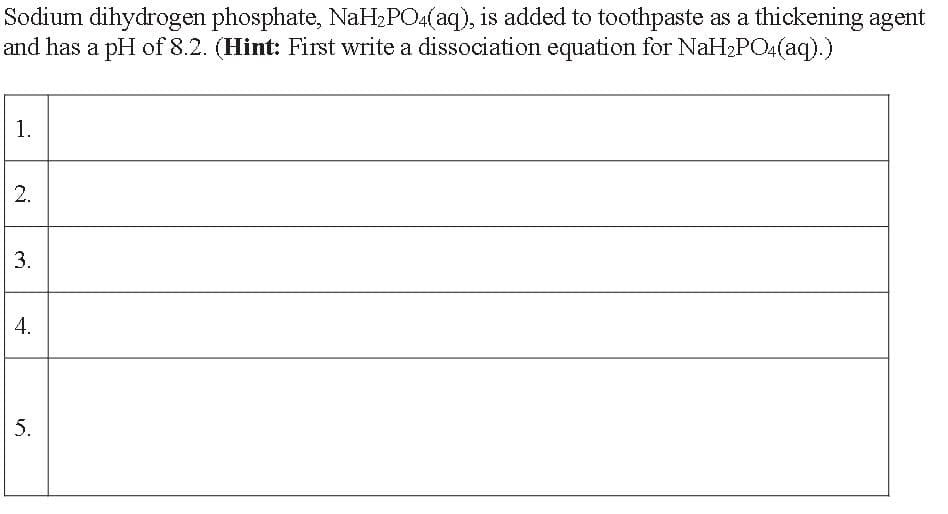For each of the following substances: 1. 2. Classify the substance as a weak acid, weak base, strong acid, or strong base Based on your classification, predict the approximate pH of a solution containing the substance. 3. Based on your classification, predict the result of a conductivity test for a solution containing the substance. 4. Indicate whether the substance is a monoprotic acid, polyprotic acid, monoprotic base, or polyprotic base. 5. Write the balanced chemical equation(s) to show all ionization or dissociation reactions that occur when the substance is in aqueous solution.
Ionic Equilibrium
Chemical equilibrium and ionic equilibrium are two major concepts in chemistry. Ionic equilibrium deals with the equilibrium involved in an ionization process while chemical equilibrium deals with the equilibrium during a chemical change. Ionic equilibrium is established between the ions and unionized species in a system. Understanding the concept of ionic equilibrium is very important to answer the questions related to certain chemical reactions in chemistry.
Arrhenius Acid
Arrhenius acid act as a good electrolyte as it dissociates to its respective ions in the aqueous solutions. Keeping it similar to the general acid properties, Arrhenius acid also neutralizes bases and turns litmus paper into red.
Bronsted Lowry Base In Inorganic Chemistry
Bronsted-Lowry base in inorganic chemistry is any chemical substance that can accept a proton from the other chemical substance it is reacting with.
I need alot of help on this section too!!


Step by step
Solved in 3 steps









